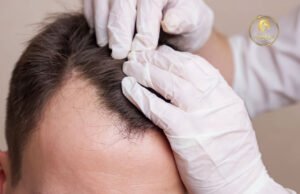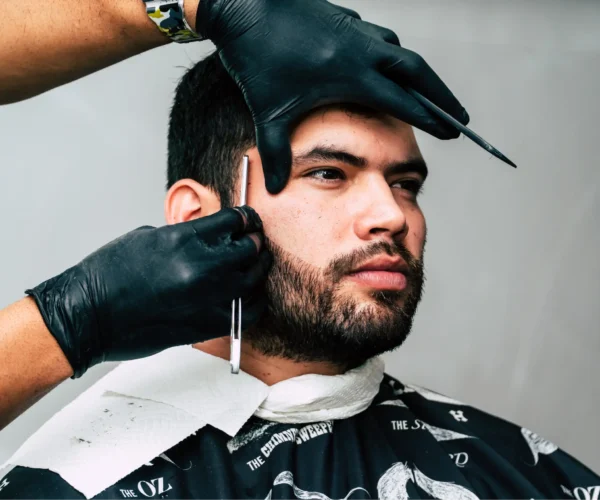PRP Therapy After Hair Transplant: How Many Sessions Are Needed?

PRP Therapy After Hair Transplant: How Many Sessions Are Needed?
Platelet-rich plasma (PRP) therapy has gained popularity for enhancing hair transplant outcomes and promoting hair growth. Understanding the optimal number of PRP sessions after a hair transplant is crucial for individuals seeking to maximize the benefits of their procedure.
This comprehensive guide explores the role of PRP therapy, factors influencing the number of sessions required, potential benefits, and considerations for integrating PRP into post-transplant care.
Understanding PRP Therapy
PRP is derived from the patient’s own blood, and processed to concentrate platelets and growth factors that stimulate tissue repair and regeneration. When injected into the scalp, PRP promotes hair follicle health, prolongs the growth phase of hair, and may thicken existing hair strands.
Role of PRP After Hair Transplant
PRP is commonly used after a hair transplant procedure to accelerate healing, minimize inflammation, and enhance the survival of transplanted hair follicles.
PRP sessions enhance hair growth by stimulating dormant hair follicles, promoting new hair generation, and improving the density of transplanted hair. PRP is often combined with hair transplant procedures to optimize results, particularly in individuals with thinning hair or early stages of hair loss.
Benefits of PRP Therapy
- Minimally Invasive: PRP involves minimal discomfort and downtime, making it a preferred option for individuals seeking non-surgical hair restoration solutions.
- Enhanced Aesthetics: PRP helps patients achieve thicker, healthier hair that blends seamlessly with existing hair, enhancing overall aesthetic outcomes.
Determining the Number of PRP Sessions
There are a few factors that can influence the needed session frequency, such as:
- Individual Response: Patients need different numbers of PRP treatments due to reasons including hair growth patterns, scalp health, and underlying medical conditions.
- Severity of Hair Loss: Individuals with more advanced hair loss may require more sessions to achieve noticeable improvement compared to those with milder cases.
- Treatment Goals: Tailored treatment plans based on desired outcomes, such as increasing hair density, improving hair texture, or maintaining existing hair health.
- PRP Protocol: Specific protocols are recommended by the treating physician, including session frequency, duration between sessions, and maintenance treatments based on each case.
Typical PRP Treatment Schedule
Initially, PRP sessions may be scheduled at intervals of 4-6 weeks to capitalize on the healing and growth-promoting effects post-transplant. After the initial series of treatments, maintenance sessions may be recommended every 6-12 months to sustain hair growth and optimize results.
What to Expect Before, During, and After Treatment
There are some steps that patients can take to prepare for PRP therapy sessions, such as avoiding certain medications that may interfere with platelet function and ensuring adequate hydration before treatment.
Additionally, there are techniques used to minimize discomfort during PRP therapy sessions, such as topical anesthesia or ice packs, however, the procedure is generally well-tolerated for most patients.
The doctor will also offer guidance on post-treatment care practices, including recommendations for scalp hygiene, avoiding excessive sun exposure, and temporarily refraining from strenuous activities that could impact treatment efficacy.
The doctor can also discuss potential costs associated with PRP therapy, including factors that may influence pricing, such as geographic location, clinic reputation, and the specific treatment protocol recommended.
PRP Maintenance and Follow-Up
PRP therapy is generally safe, with minimal risk of adverse reactions due to the use of the patient’s own blood components. Continued PRP sessions are often necessary to maintain hair growth and density, emphasizing the importance of ongoing treatment adherence.
You can ask the doctor to provide resources and information to help patients understand the role of PRP in hair restoration, manage expectations, and make informed treatment choices.
Long-term monitoring and regular follow-up visits with the hair restoration specialist are also important to monitor progress, adjust treatment plans as needed, and address any concerns.
Long-Term Outcomes
Research shows that PRP therapy results in hair restoration, including the potential for sustained improvements in hair density and quality for an extended period of time.
It’s important to schedule regular follow-up appointments with a hair restoration specialist to monitor treatment progress, assess hair growth patterns, and make any necessary adjustments to the treatment plan.
Patient Education and Empowerment
Doctors can provide patients with access to educational materials, such as informational pamphlets or online resources, that explain the science behind PRP therapy, treatment expectations, and real patient testimonials.
Patients are also encouraged to connect with support networks or online communities focused on hair restoration and PRP therapy to share experiences, ask questions, and gain emotional support throughout their treatment journey.
Ethical Considerations and Informed Consent
- Informed Consent Process: Informed consent processes are highly required in PRP therapy, including transparency about potential risks, benefits, expected outcomes, and alternative treatment options available to patients.
- Ethical Guidelines: Ethical considerations in the use of PRP therapy, such as patient autonomy, confidentiality, and ensuring that treatment recommendations align with evidence-based practices and patient-centered care must be followed in the place of treatment.
Future Directions in PRP Therapy
- Innovative Approaches: Research and development in PRP technology, including improved delivery methods and enhanced formulations, are studied to optimize treatment efficacy.
- Clinical Trials: Ongoing research initiatives explore new applications of PRP in hair restoration and potential advancements in treatment protocols.
- Technological Advances: There are emerging trends in PRP technology, such as automated PRP processing systems or customized formulations enriched with additional growth factors, that might have a potential impact on treatment efficacy.
- Recent Research: Ongoing recent research investigates novel applications of PRP therapy in hair restoration, including outcomes related to different patient demographics and types of hair loss.
Conclusion
Platelet-rich plasma (PRP) therapy offers a promising adjunctive treatment option for individuals undergoing hair transplant procedures.
By understanding the optimal number of PRP sessions and integrating this therapy into post-transplant care, patients can potentially enhance hair growth, improve hair density, and achieve natural-looking results.
Consultation with a qualified hair restoration specialist is essential to develop a personalized treatment plan tailored to individual needs and treatment goals.
Through comprehensive education, regular monitoring, and adherence to recommended protocols, PRP therapy can play a pivotal role in achieving long-term satisfaction and confidence in hair restoration outcomes.
If you want to boost the results of a hair transplant or want to have lush hair with a safe and minimally invasive technique, then PRP sessions at Global Hair Dubai are your answer.
Contact Us and book your free consultation session now!

Factors Affecting FUE Hair Transplant Results
Factors Affecting FUE Hair Transplant Results Hair loss can be a distressing experience for many individuals, impacting self-confidence and quality.
Read More
Beard Transplant in Dubai – Restore.
Having a thick and attractive beard is a symbol of masculinity. However, not every man is naturally blessed with full.
Read More
